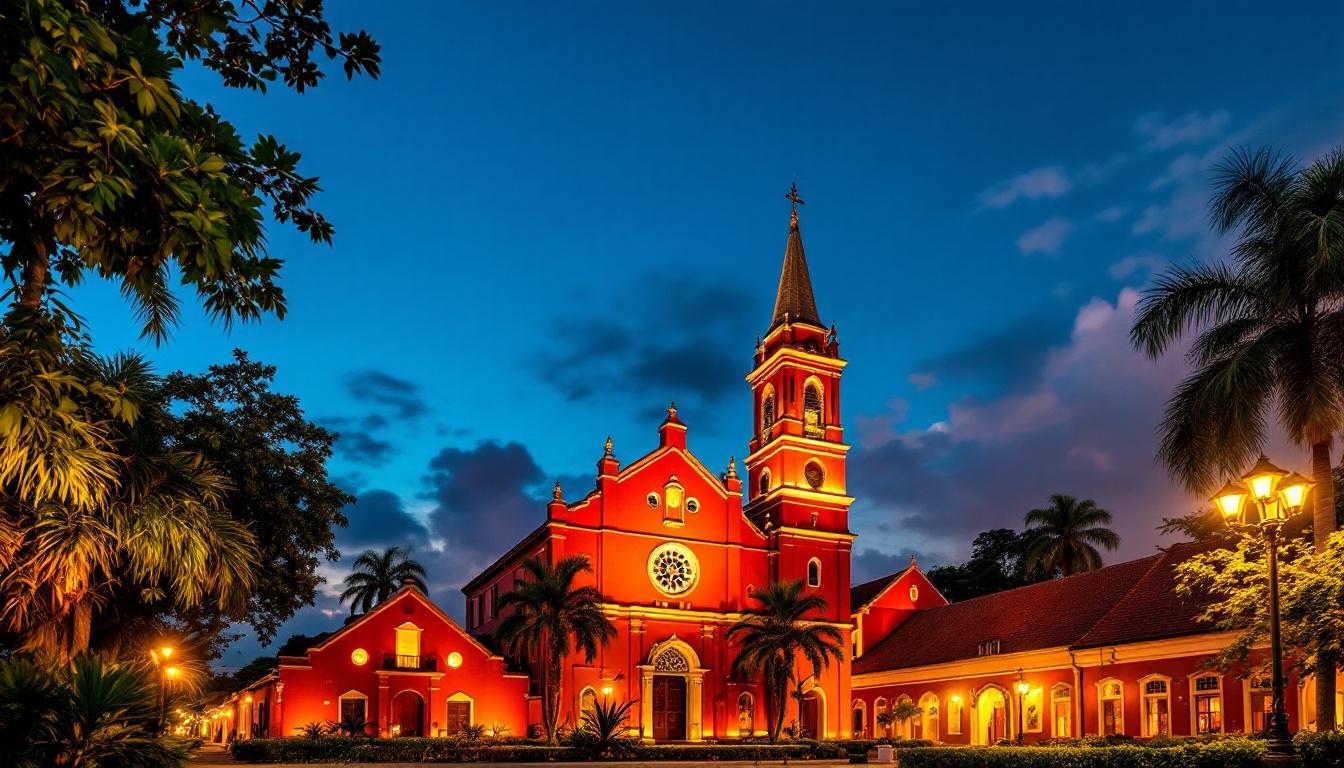In the heart of Southeast Asia, where the Straits of Malacca meet the Malaysian shore, a captivating UNESCO World Heritage city tells the story of colonial conquest through its vibrant streets and distinctive architecture. Melaka (also known as Malacca) stands as a living museum where Portuguese fortresses, Dutch administration buildings, and local Peranakan shophouses create a mesmerizing cultural tapestry unlike anywhere else in Malaysia.
Where European powers battled for spice route supremacy
Melaka’s strategic position along the spice trading route made it fiercely contested territory. The Portuguese seized control in 1511, building the massive A’Famosa fortress whose stone gate still stands as a testament to their military might. The Dutch followed in 1641, establishing the distinctive red-painted administrative center that would become the city’s most photographed landmark.
“When you walk through Melaka, you’re literally stepping through chapters of colonial history. Each building tells the story of a different European power trying to control the spice trade,” explains local historian Dr. Ahmad Razali.
The crimson heart of Dutch colonial architecture
Dutch Square (Red Square) forms Melaka’s most iconic vista, where Christ Church and the Stadthuys building stand in striking terra-cotta splendor. Unlike the whitewashed colonial buildings found elsewhere in Asia, Melaka’s Dutch district maintains its distinctive crimson hue, originally created using a mix of local clay and the antimicrobial properties of ox blood to protect against tropical mold.
Where three distinct cultures merged into one
Perhaps Melaka’s most fascinating legacy is its Peranakan culture – the unique fusion of Chinese, Malay, and European influences that created a distinct cuisine, architecture, and cultural identity. The Baba & Nyonya Heritage Museum offers visitors an intimate glimpse into this vibrant culture through preserved family homes filled with intricate beadwork, ornate furniture, and European porcelain.
A river that whispers centuries of trading secrets
For a different perspective of Melaka’s charm, the river cruise reveals colorful murals depicting the city’s history alongside traditional kampung houses. This waterway once served as the lifeblood of trade, where communities have existed on water for centuries, much like the floating villages of Vietnam’s Ha Long Bay.
Jonker Street: where heritage meets gastronomic delight
Weekends transform Jonker Street into a vibrant night market where the aromas of satay celup (skewered meats and vegetables dipped in simmering peanut sauce), pineapple tarts, and nyonya laksa create a sensory feast. This historic Chinatown district blends seamlessly with hidden architectural treasures around every corner.
“Our food tells the story of Melaka better than any history book. In one bite of nyonya cuisine, you taste Chinese ingredients, Malay spices, and Portuguese cooking techniques,” says Chef Linda Tan, a local culinary expert.
Beyond the tourist trail: hidden Portuguese heritage
While most visitors focus on Dutch Square, the Portuguese Settlement offers a fascinating glimpse into the lives of descendants from the earliest European colonizers. Here, Cristang culture survives through distinctive cuisine featuring debal curry (devil’s curry) and traditional folk dances that would feel at home in coastal European towns.
Spiritual diversity standing side by side
Within a single square kilometer, visitors can discover Cheng Hoon Teng (Malaysia’s oldest Chinese temple), the 18th-century Kampung Kling Mosque with its pagoda-like minaret, and St. Paul’s Church ruins atop a hill offering panoramic views. This religious harmony reflects Melaka’s centuries-old tradition of cultural tolerance, similar to Morocco’s blue cities where different faiths coexisted.
A living heritage deserving protection
As Southeast Asia modernizes rapidly, Melaka maintains a delicate balance between preserving its UNESCO-protected heritage and accommodating growing tourism. The city’s commitment to conservation ensures that these remarkable Portuguese and Dutch influences will continue inspiring visitors from around the world, much like ancient traditional practices preserved against modern pressures.
Standing in Melaka’s Dutch Square as the evening light turns its red buildings to deep crimson, you’ll feel the whispers of Portuguese sailors, Dutch merchants, Chinese traders, and Malay sultans who all left their indelible mark on this extraordinary Malaysian port city – a place where history isn’t confined to museums but lives vibrantly in every colorful street corner.
